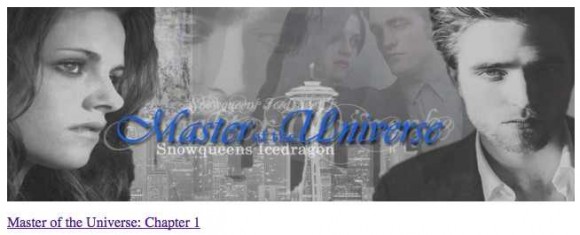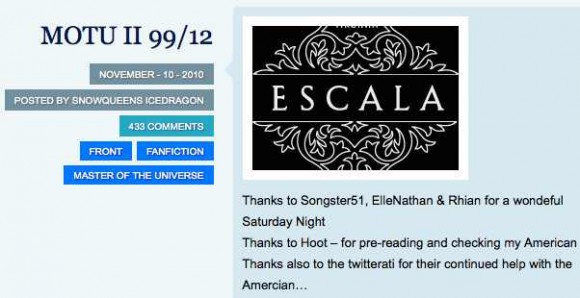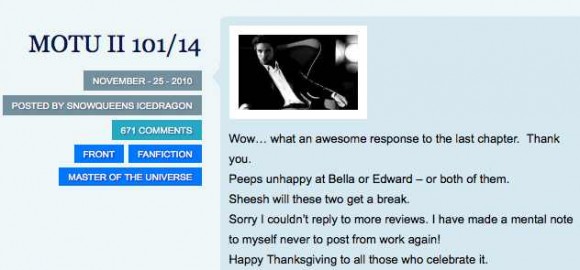The First Step to Self-Publishing Your Book
Imagine you wake up, jump out of bed, and run to your computer.
You could barely sleep last night you were so excited.
You just… finally… launched your book yesterday. And you can’t wait to see how well it did. You’ve been using a secret, super-powerful publishing strategy, and you have a great feeling about it.
You boot up the computer, ready for whatever comes. The anticipation is killing you.
You log in to your special website and check the sales numbers. And…
Here it is. The moment of truth….
You can’t believe it! Thousands of people bought your book while you slept. Some of them are reading it right now. And this is just the beginning!
You did it!
That night, you celebrate with some friends and drinks. You feel like this…
Yeah, right, Chris, I hear some of you saying. Let’s snap back to reality.
To the naysayers, I plead: It’s possible.
Before you toss this scenario out completely, consider this…
The technique you’ll learn today was used by the most successful self-published author in the world.
It’s a proven strategy that, when executed properly, will give you an unfair edge in the self-publishing sphere.
We’ll be leaking this secret — and many others from Laissez Faire’s Guide to Self-Publishing — while we put this guide together for you. In fact, you’re going to help us self-publish it (more on that later).
There are seven chapters in all. Each week, we’ll reveal a new one.
In these special episodes, we’ll include some of the best secrets you’ll find in your copy of Laissez Faire’s Guide to Self-Publishing.
If you follow along, you could even write, format, publish, and market your book along with us. Use the techniques we’ll share, and your book will come together over the next few weeks like magic.
For example, you’ll learn how to publish your book without spending a dime on advertising…
Also, people you don’t even know will help you write it… (and they’ll even buy it from you after you’re done!)…
In fact, if you follow today’s advice, you won’t have to beg people to feature your book… they’ll be chasing after you.
What we’ll discuss today is a deep, fundamental secret to self-publishing in the new industry.
Surprisingly, it’s one secret we don’t see anyone else talking about.
The times have changed. It’s an entirely new terrain out there. And keeping ahead of the curve is crucial.
If you’re a writer… publisher… author… or entrepreneur… you can’t afford not to learn this deceptively simple tactic.
Understand it, and blast off light-years ahead of the competition. Ignore it, and risk becoming just another fossil from the old world.
Grab a pen and some paper (seriously, you’re going to want to take notes) and let’s get right to it…
Our first chapter in Laissez Faire’s Guide to Self-Publishing is on generating ideas…
Idea generation is the first step, and some would say, one of the most important steps to writing a book.
And we would argue that many writers fail at developing strong enough ideas before sitting down to write.
But not you. Not today.
Even if you already have a strong idea written out, what we’re about to share will help you make it even stronger…
I’m talking about a way to test the market to see if what you’re writing is something people want. The worst feeling in the world is pouring your heart into something for months (or even years) only to realize that no one cares.
To be sure, I’m not talking about finding some “low-hanging fruit” subject and writing about it. Not at all. Keep your integrity intact.
With the technique you’ll learn today, you’ll be able to write what you want… You’ll just know how to shape it in a way that people will be receptive…
We’ll begin with something called “framing.” And, if used properly, it’s one of the sharpest tools in your box.
Hypnotherapists have a saying… He or she who controls the frame, controls the game.
In persuasion, purchasing a car, getting a raise, attracting a mate, and writing ANYTHING…
Setting the right frame is the first — and most important thing — you can do.
Take this example…
After Sept. 11, a TV network asked Americans if they would support a program that screened people that looked “Middle Eastern” at train stations and airports.
Many of them said they would. (Hello, TSA!)
Oddly enough, though, when these people were asked if they supported racial profiling…
Most said no.
Hmm…
It’s the frame that makes all the difference.
Another example, just so the importance of finding the right frame sinks in…
After the crash, the “Big Three” automakers went before Congress and the Senate to ask for money. Before they went to meet them, though, they thought carefully about what they were going to say.
They had to be careful about how they would frame their appeal. And they knew it.
The automakers didn’t stand before Congress and ask if they wanted to throw taxpayer money away… or if they wanted to bail out a company that couldn’t sustain itself…
Instead, they asked, “Do you want to save people’s jobs?”
Had they said, “We’re incompetent, please help us,” Congress might not have been so generous (who knows, maybe they would’ve)…
But they knew Congress would respond to “saving jobs” more than they would to “bail us out.” They were right.
It’s all in the frame.
What does framing have to do with self-publishing? Everything.
Chances are, if you’re writing a book, you want people to read it. (If not, you can just exit this issue now. Your book is already a success. Good job.)
The only way to make sure people will read it is to do these three things:
- Make sure you’re writing about a topic that people want to read about…
- Make certain your book is telling the story not being told…
- Make sure you frame it in a way that shows readers the benefits of reading your book… What’s in it for them?
I’ll tell you more about why framing is essential in a moment.
First, here’s some behind-the-scenes knowledge…
Confession time: Before we set out to write Laissez Faire’s Guide to Self-Publishing, we tested the market (that’s you).
You might remember our story about Chrissy…
When you wrote in — with bated breath — and told us about your awesome book… and how badly you wanted to learn how to publish it…
Well, a light bulb lit up above our gourds. You told us you wanted it. Luckily, we thought to ask.
My point? Test the market. Look at rule #1 again. Make sure you’re writing a topic that people want to read about.
And the best way to do that is simple: you ask.
But, Chris, I’m not writing to a bunch of people every day that can tell me what they want… It’s different for me…
OK. Sure. That’s an excuse, I suppose. Perhaps you should consider this…
If you’re not writing to a bunch of people to test your idea… why not?
Let me explain…
In late February 2014, E.L. James’ erotica series Fifty Shades of Grey hit 100 million in sales.
That’s 100 million copies.
Fifty Shades has become the fastest-selling book of all time. Even more incredible, there was one month when the book accounted for 25% of all book sales in the world.
And, upon writing, it’s still “hot.”
“The Fifty Shades trilogy struck a chord around the world that continues to resonate,” Anne Messitte, publisher of Vintage/Anchor Books, said in a recent statement. “We see new readers coming to the books every day, and the sales, two years after our initial publication, remain strong and steady.”
The movie is scheduled for release on Valentine’s Day weekend 2015. And I just saw that a Fifty Shades lingerie line is being launched.
Amazing, right?
What many people don’t know is that James originally self-published her book…
As an e-book.
It wasn’t until she sold 250,000 copies that a publisher picked her up.
She didn’t go through mainstream channels. She didn’t get an MFA. She didn’t grit her teeth and bear through rejection slip after rejection slip.
She didn’t even hire an agent.
And, most importantly, she didn’t listen to the critics and naysayers.
She’d been “rational” to listen to them. She had everything going against her. She looked like a salmon swimming upstream.
On top of all the aforementioned, she started writing the trilogy during a mid-life crisis. And she was 51, only starting to write at 46. She didn’t use any special connections, either.
Had she listened to the critics, she may’ve never started. But her success hinges on one fact: She did something that NO ONE had done (or is doing even now).
She gained a following while she was writing and then she published the book.
Let me repeat that: She gained a following, and then published.
As soon as she published, her fans bought it. It was then immediately pushed to the top of Amazon’s leaderboard, where it got the most eyeballs. Then, those followers posted reviews, which made other, less aware, readers jump on board.
For that reason, it was a hit. And no matter what you’re writing… you can do your version of the same strategy.
Here’s how…
Whether James knew it or not, she was “pulsing” the market as she wrote… and adapting her writing to her audience.
Here’s what I mean…
Many don’t know this, but Fifty Shades of Gray started as Twilight fan-fiction.
Meaning, the sex-obsessed Christian Grey and Anastasia Steele were originally Bella and Edward, the vampiric lovers, who were (apparently) into bondage and contracts.
The book was originally called Master of the Universe. Here’s a screengrab of the link to the first chapter from the fan fiction website…
 Cheesy…but you’ll learn why this is genius in a moment…
Cheesy…but you’ll learn why this is genius in a moment…
Now here’s where James’ genius gets a little bit more… geniuser…
Fan fiction is an inherently collaborative and anti-commercial space, which gave her an enormous advantage over traditional writers that were thinking inside the box.
While she was writing her book on this fanfiction site…
Full of people who already loved the ideas she was writing about (those ideas being Bella and Edward, but it can be anything)…
She essentially piggybacked on Twilight’s success. She would feed them chapter by chapter, and they would offer suggestions and comments to make it better.
Some people offered to help her edit and clean it up. Some offered to help adjust dialogue.
They wanted to help her. She had a room full of passionate readers begging to let them read it… and help her write it!
And, they even bought it from her when she published!
This is all starting to sound unbelievable, I know.
As proof that this is real, here are comments from her thanking her readers. Her screenname was Snowqueens Icedragon.
Think it can’t be her? Here’s what’s on the site now…
James broke every rule imaginable in the publishing industry. Now look at her.
She may not know it, but her strategy was revolutionary.
That’s why, if you have an idea to write a book, your first question should be this: Is there a fan base that I can connect to? How can I connect with these readers and get their feedback…their suggestions…their “sticking points”?
Remember crowdsourcing? Yep. Same thing.
Again, take, for example, our guide on self-publishing.
We found our fan base (you). We’re getting your feedback. You’re helping us. We’re helping you. It’s a win-win.
You can do the same.
OK, here’s where framing fits into this equation…
EL James started with an idea she wanted to write about (first step).
And she took the idea to a website full of rabid fans. She framed her idea to fit (at first, at least) to what they loved (Bella and Edward)…
And those fans, inevitably, flocked around her. She later switched those characters for characters of her own, after she adapted her story to her target audience.
Nothing’s stopping you from doing the same thing.
Control the frame, control the game. The more fans you can find, of course, the better this will work. So pick a frame in your niche that already has a good following, like James did for Twilight.
Unfortunately, we’re almost out of time…
You have your idea…
Now it’s time to take it one step further.
Is there a place with a group of people that would love to read about your idea? Where will people help you write it? Really think.
It must be a place where you can use your newfound framing skills. Frame it in a way that they’ll find intriguing.
It doesn’t have to be complicated. If you’re writing a guide about hammers, where would you go? To a forum full of carpenters, of course. They talk about hammers all day. Big ones. Skinny ones. Thick ones. And they love talking about them.
Listen closely enough — and ask the right questions — and they’ll write it for you.
Writing a love story? Go to Amazon and see what’s best-selling in the romance section. See if the authors have a fan site. One of them will. That group of people love romance. And they’ll tell you all day what they love about it.
Is it a spy thriller? Wire harness manual? Celebrity biography? Fitness guide? Sci-fi novel?
No matter what it is…it’ll work. As long as it already has a following, you can write it, publish it, and sell it.
Your fans already exist. They’re just waiting for you to come find them. And, if your work is a good fit, they’ll be more than happy to help.
So here’s the process, one more time.
- Take your idea to a place with a huge following in your niche (piggyback already-existing success)…
- Frame your idea in a way that your target readers would love reading about…
- Let your new fans help you make it even better than it is…
That’s it. We’ll go even deeper into our self-publishing strategy next week.
Regards,
Chris Campbell
for The Daily Reckoning
Ed. Note: This is only the first of several installments on how to get your book noticed in the new publishing arena. For the next few weeks, Chris Campbell will be taking his Laissez Faire Today readers through the process of writing, formatting, editing, creating your cover (for free or cheap), publishing, and marketing for maximum effect. To make sure you won’t miss a single secret, sign up for Laissez Faire Today, for FREE, right here.







Comments: